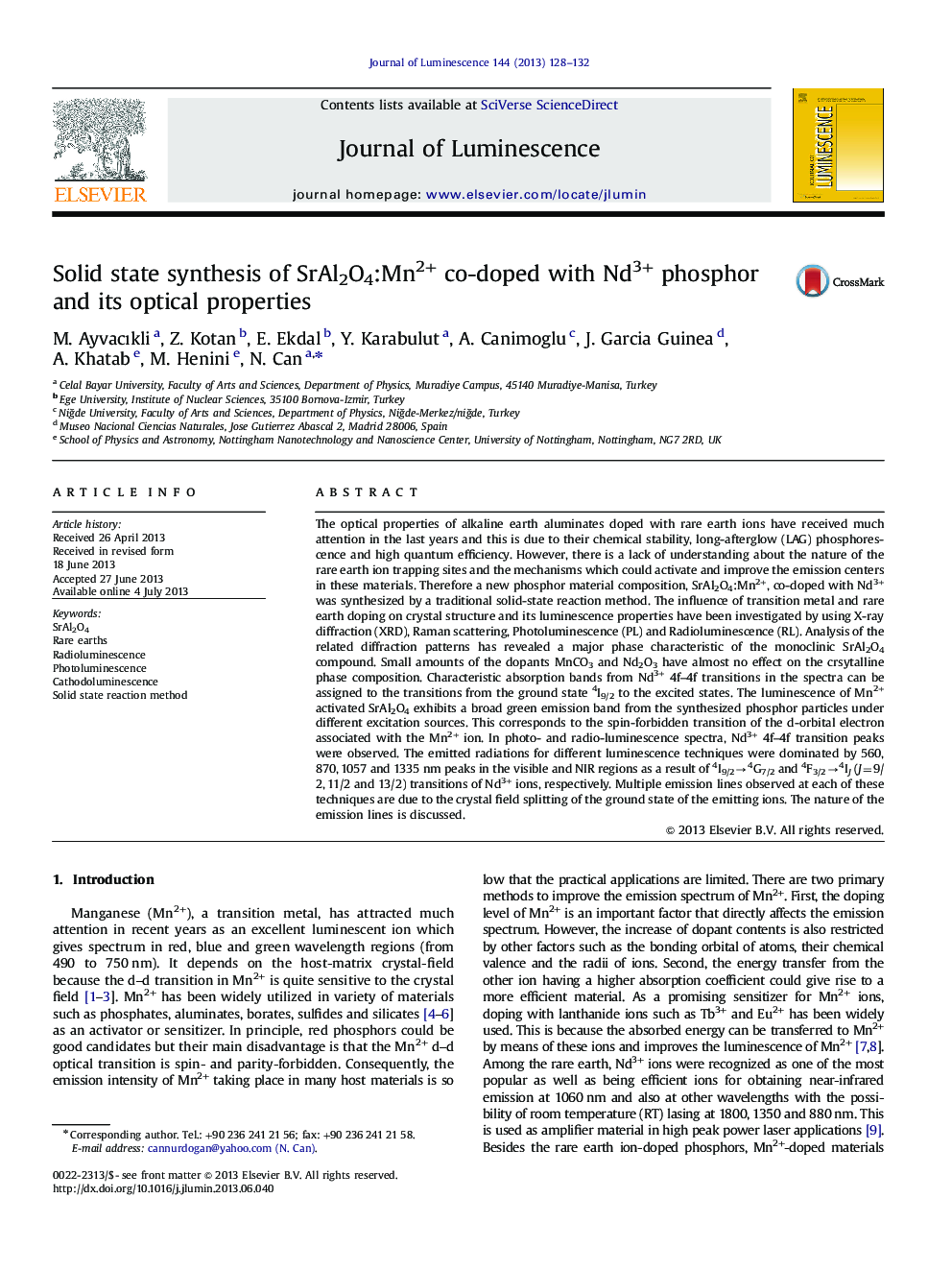| Article ID | Journal | Published Year | Pages | File Type |
|---|---|---|---|---|
| 5400608 | Journal of Luminescence | 2013 | 5 Pages |
Abstract
The optical properties of alkaline earth aluminates doped with rare earth ions have received much attention in the last years and this is due to their chemical stability, long-afterglow (LAG) phosphorescence and high quantum efficiency. However, there is a lack of understanding about the nature of the rare earth ion trapping sites and the mechanisms which could activate and improve the emission centers in these materials. Therefore a new phosphor material composition, SrAl2O4:Mn2+, co-doped with Nd3+ was synthesized by a traditional solid-state reaction method. The influence of transition metal and rare earth doping on crystal structure and its luminescence properties have been investigated by using X-ray diffraction (XRD), Raman scattering, Photoluminescence (PL) and Radioluminescence (RL). Analysis of the related diffraction patterns has revealed a major phase characteristic of the monoclinic SrAl2O4 compound. Small amounts of the dopants MnCO3 and Nd2O3 have almost no effect on the crsytalline phase composition. Characteristic absorption bands from Nd3+ 4f-4f transitions in the spectra can be assigned to the transitions from the ground state 4I9/2 to the excited states. The luminescence of Mn2+ activated SrAl2O4 exhibits a broad green emission band from the synthesized phosphor particles under different excitation sources. This corresponds to the spin-forbidden transition of the d-orbital electron associated with the Mn2+ ion. In photo- and radio-luminescence spectra, Nd3+ 4f-4f transition peaks were observed. The emitted radiations for different luminescence techniques were dominated by 560, 870, 1057 and 1335Â nm peaks in the visible and NIR regions as a result of 4I9/2â4G7/2 and 4F3/2â4IJ (J=9/2, 11/2 and 13/2) transitions of Nd3+ ions, respectively. Multiple emission lines observed at each of these techniques are due to the crystal field splitting of the ground state of the emitting ions. The nature of the emission lines is discussed.
Keywords
Related Topics
Physical Sciences and Engineering
Chemistry
Physical and Theoretical Chemistry
Authors
M. Ayvacıkli, Z. Kotan, E. Ekdal, Y. Karabulut, A. Canimoglu, J. Garcia Guinea, A. Khatab, M. Henini, N. Can,
